Chinese Calligraphy // The Complete Guide to 书法
Chinese calligraphy, or 书法 (shūfǎ), is an ancient art form dating back as early as around 200 BCE (2).
Since some Chinese characters are based on pictographs, writing Chinese is almost like drawing, and calligraphy even more so!
Chinese calligraphy has a long and rich history.
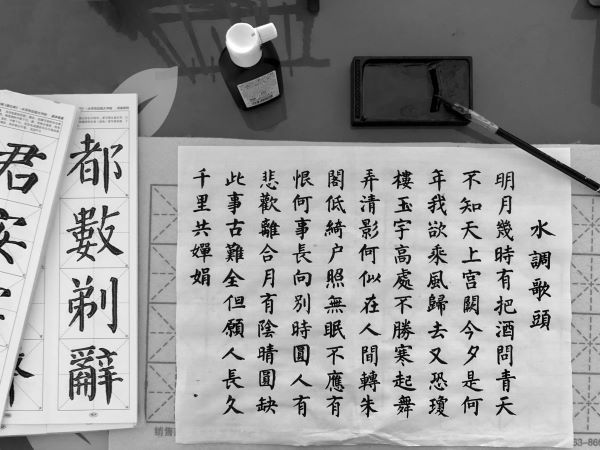
The earliest forms of Chinese writing were found carved on animal bones and bronze vessels during the Shang Dynasty (around 1600-1100 BCE).
However, it was later, during the Han Dynasty (206 BCE – 220 CE) when calligraphy, using a brush and ink, began to develop (2).
You’ll find Chinese calligraphy on scrolls, paintings, and inscribed on statues or temples. Some styles of calligraphy are more difficult to read than others, but all are beautiful and bring a certain element of grace to whatever medium they’re written on.
Calligraphy masters have spent years and years perfecting their craft, but don’t be intimidated.
You don’t have to be good at it right away to practice it and have fun!
Chinese Calligraphy | Calligraphy Materials
Chinese Calligraphy | Learn the Basics
Chinese Calligraphy | Differences Between English and Chinese Calligraphy
Chinese Calligraphy | Styles of Calligraphy
Chinese Calligraphy | Simplified Vs. Traditional
Chinese Calligraphy | Calligraphy at LTL
Chinese Calligraphy Materials
To write calligraphy, you need four materials
- A brush
- Ink
- Inkstone (this can be omitted if you use liquid ink)
- Paper
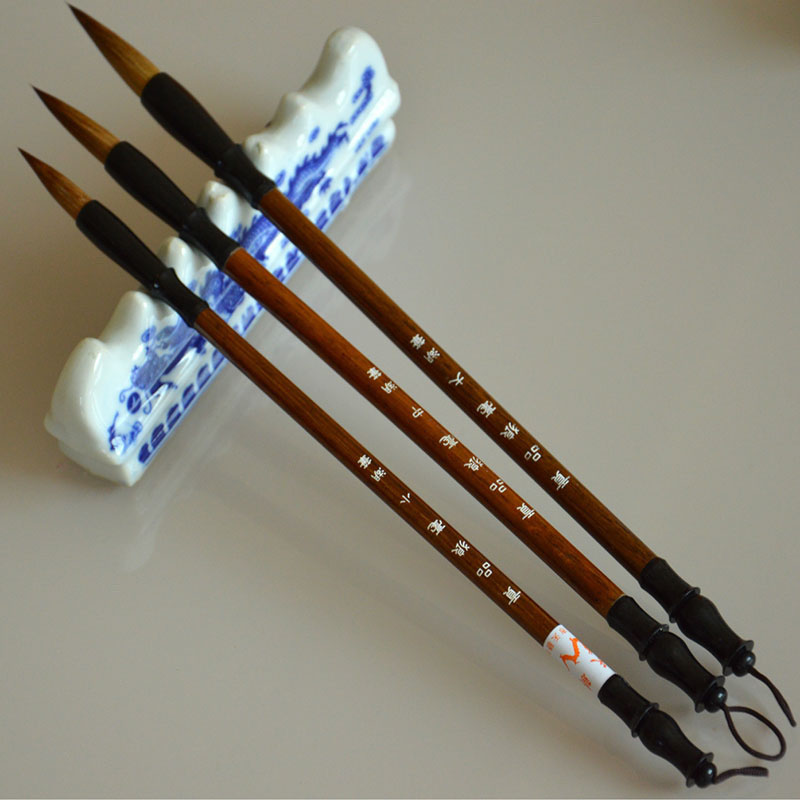
Together, these are called 文房四宝 (wénfángsìbǎo), or the Four Treasures of Study (2).
Brushes are traditionally made with white, black, or yellow animal hair (such as rabbit, goat, or weasel hair) bundled together and coming to a point.
The hair is pushed into a tube made of bamboo or wood, creating the handle.
The brush must be flexible in order to create the flowing strokes in calligraphy (2).
Ink is made from lampblack, created from burning pine resin or oil under a hood. Soot is collected and pressed into blocks that are often decorated.
The calligrapher can then use an inkstone to grind the block down to powder and mix it with water.
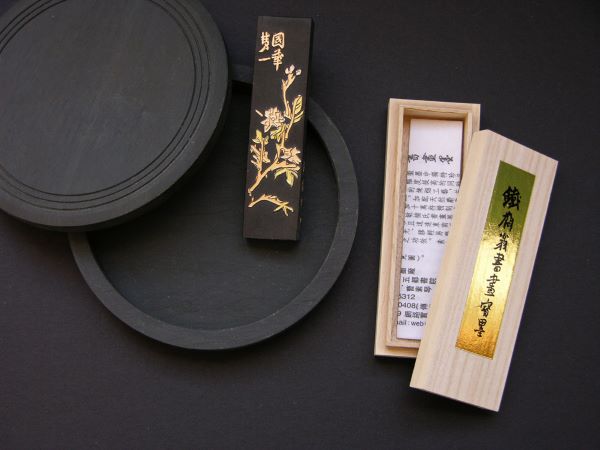
This way, he or she can control the viscosity of the ink (2). Liquid ink can also be used, but is more difficult to transport and can be messier.
Lastly, paper was originally made from the fibers of plants such as mulberry, hemp, or bamboo.
This was much more affordable than silk (2).

15 Chinese Idiom Stories – Speak like a Native
15 of the Best Chinese Idioms – Our Favourites and the Stories Behind Them Chinese idioms, or Chengyu, are an integral part of the language, packed with history, wisdom, and charm. They are often made up of four characters, yet…
Learn the Basics of Chinese Calligraphy
There is a lot to learn about Chinese calligraphy, but if you’re just starting out, here are some of the most important things to pay attention to.
The first is stroke order. Stroke order is critical to calligraphy.
In general, characters are written top to bottom, left to right, and horizontal to vertical (3).
For more complicated characters, you can always look up the correct stroke order online.
Once you’ve practiced writing characters, the stroke order will come more naturally to you.
The second is the strokes. There are eight different types of strokes in Chinese calligraphy, and each have a specific way they should be drawn.
Once you’ve mastered these 8 strokes and you know the stroke order, you should (in theory!) be able to correctly write any Chinese character (4).
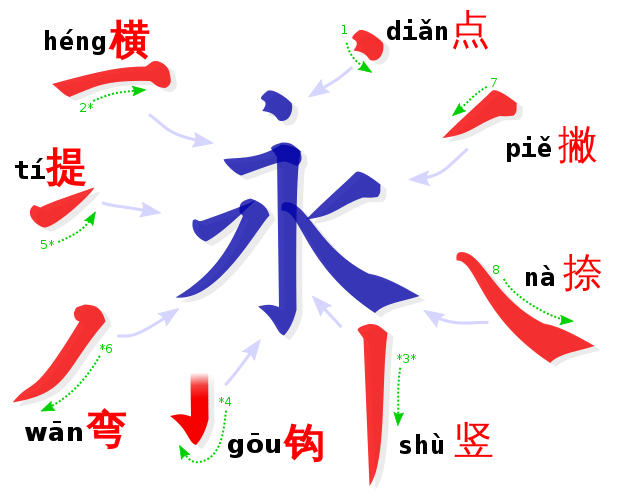
Another important part of calligraphy is how you hold the brush.
Unlike normal writing, the calligraphy brush should be held vertically, grasped between the thumb and first two fingers, with the ring and fourth fingers behind the brush for stability.
At least for me, this type of grip felt very unnatural at first, but with a little practice, it should feel easier to control the brush! (4)
You’ll also want to pay attention to the pressure you put on the brush.
Calligraphy requires you to master the thinness and thickness of each stroke.
Some strokes require lighter pressure at the start of the stroke and heavier pressure at the end. Others require a slight flick of the brush. Controlling how much ink the brush soaks up is also important! (4)
Last but not least, posture is also very important! Your posture should be straight and symmetrical. Keep your head straight, relax your shoulders, and keep your torso straight without leaning back into the chair. Pay attention to your writing! Keep both your feet on the ground without crossing your legs (5).

Life Outside the Classroom in Beihai // Chris’ Story
Life outside the classroom is special in Beihai. It’s not all about opening up a textbook. Beihai gives you the chance to truly immerse yourself into China.
Differences Between English and Chinese Calligraphy
Writing English calligraphy is very different from Chinese calligraphy.
As someone who personally enjoys hand lettering, I know from experience that the style used for English calligraphy doesn’t carry over well into Chinese calligraphy.
In English calligraphy, one of the basic elements requires down strokes to be thicker than up strokes, creating a contrast that is pleasing to the eye.
However, these rules don’t apply for Chinese calligraphy.
True mastery of calligraphy requires knowledge of the different strokes used in writing characters. Each stroke is painted a certain way using the brush.
However, one important point that does (somewhat) carry over from English to Chinese is stroke order.

Normally, writing words in English doesn’t require a certain stroke order.
Sure, maybe when you were learning to write back in elementary school, your teacher taught you to write letters a certain way.
But in every day life, using a pencil or pen to write, it’s not noticeable whether you write the letter “V” with two down strokes, one up and one down, or both up!
However, when writing calligraphy in English, the order does become a bit more important because the down strokes should be thicker and the up strokes thinner.
In Chinese, stroke order is important, even in regular writing, but more so in calligraphy. In both cases, if your pen or pencil drags when writing quickly, these extra strokes can either be clues as to what the character should be, or misleading and confusing.
Even when writing characters on my phone, I’ve noticed that I can write a really messy character, and my phone will still recognize it, as long as I’ve used the correct stroke order.
Additionally, the way the brush drags across the paper changes the look of the character, so the correct stroke order and even direction of the stroke is essential!

Shapes in Chinese 🔷 The Complete Go To Guide
The Definitive Guide to Shapes in Chinese Time for another useful vocabulary post – this time we talk about how to say Shapes in Chinese. Learning the shapes in Chinese is actually pretty easy. Many of the shapes follow a…
Styles of Calligraphy
There are five basic styles of calligraphy.
Each style is very distinct and has developed over the years.
Seal Script
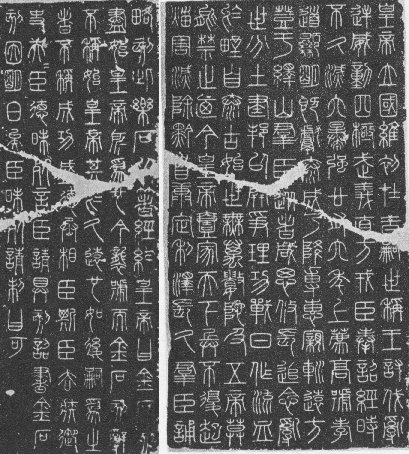
The first style is Seal Style or Seal Script, also called 篆书 (zhuànshū).
Its name comes from the fact that this script was often engraved on stones or seals.
This style was created during the Chin Dynasty.
These characters are taller than they are wide, often symmetric, with both smoothly curved and straight lines. Stroke thickness stays fairly constant. Because these characters are very structured and the stroke thickness is so steady, this style is often recommended for beginners (1).
Clerical Script
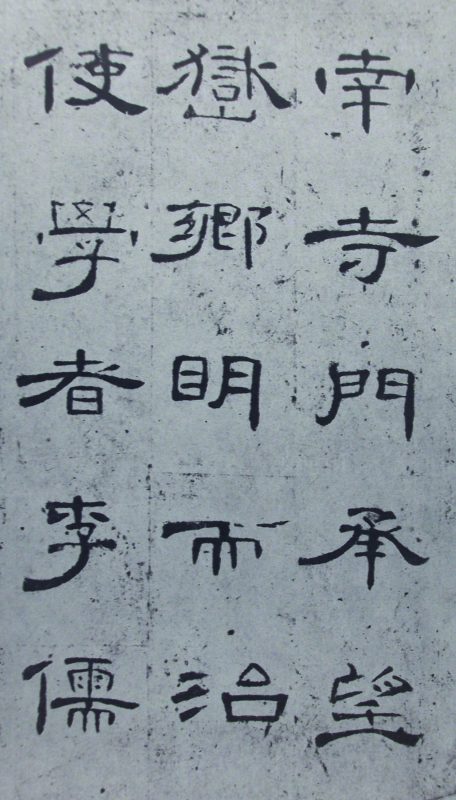
The second style is Clerical Script, or 隶书 (lìshū).
This style was also using during the Chin Dynasty by government officials.
The word itself refers to servitude because this script was used by clerks working in prisons.
This style is more efficient, simplifying some of the more complex curves of the Seal Style in favor of sharp bends, squared instead of round.
Later, during the Han Dynasty, this style became more popular.
This style is also a popular style for beginners to learn, as there aren’t as many strokes to learn (1).
Running Script
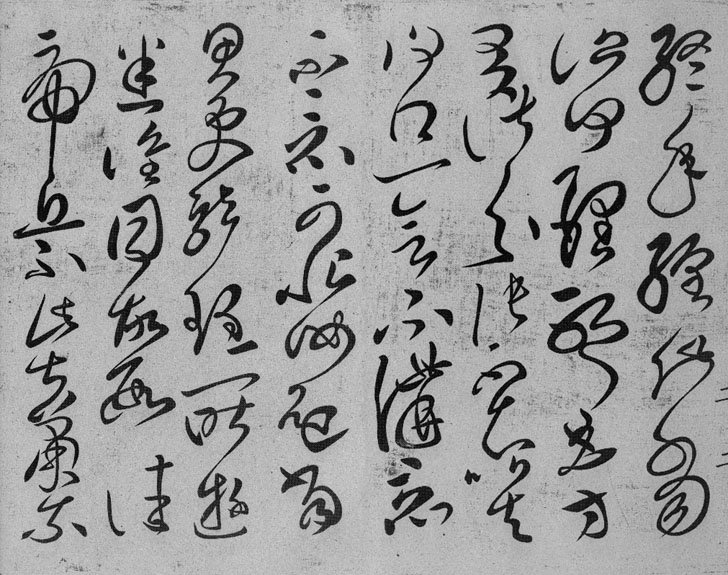
Next is Running Script, or 草书 (cǎoshū).
It was developed during the Han Dynasty.
Many great calligraphers used this style. This style is the most abstract and doesn’t require precise strokes like the other styles do.
At the same time, it still has its own set of rules (1).
In this script, the calligrapher focuses more on the right side of the character while simplifying the radical on the left. Despite looking messy, this style of calligraphy is very advanced and usually requires mastery of other styles first before attempting it (1).
Walking Script
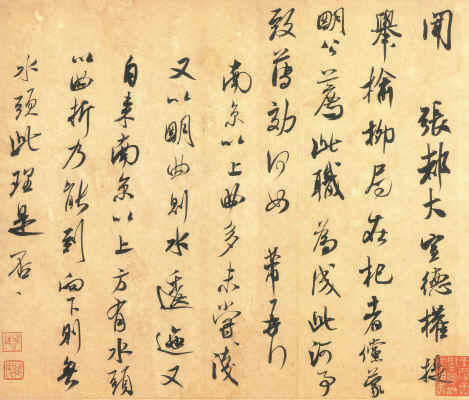
The fourth style is Walking Script, or 行书 (xíngshū).
It was formed during the Han Dynasty.
This style is a combination of the Running Script, and the last style listed here, the Standard Script.
In fact, it can lean closer to either one of the two styles, depending on how the calligrapher chooses to express himself.
The Walking Script is smooth and connected, but not as much as the Running Style script.
It’s also more simplified than Standard Script (1).
Standard Script
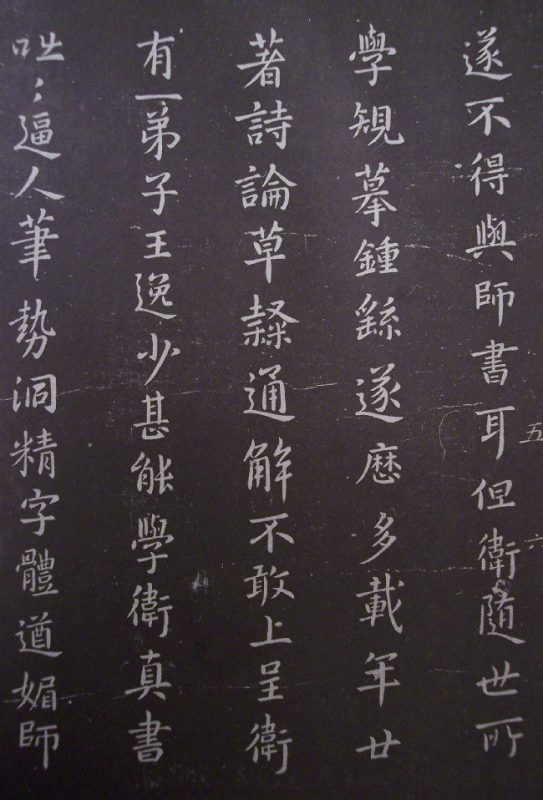
Last, but not least is the Standard Script/Style, or 楷书 (kǎishū).
This style was invented toward the end of the Han Dynasty and developed more during the Wei Dynasty (1).
This standardized form of calligraphy is defined by its clear and separate strokes and square structure.
This script is widespread throughout China.
It is generally used in newspapers, textbooks, and government documents.
The other scripts are not commonly seen (1).
Chinese Calligraphy – Simplified vs. Traditional
When writing Chinese, you can write either simplified or traditional characters.

Traditional characters, aptly named, are more complicated, and their strokes portray more of the stories and history behind each character.
On the other hand, simplified characters are easier to remember and were developed to increase literacy rates.
But since some strokes are missing or removed, the characters are not as rich in history and culture.
Simplified characters are used throughout mainland China, while traditional is used in areas such as Hong Kong and Taiwan.
When formally writing characters, traditional is a better choice, because calligraphy as an art form should honor the history of the characters. The greater number of strokes better showcases the beauty of the art.
Chinese Calligraphy at LTL
If you’re interested in learning some calligraphy while you study Chinese, come to LTL!
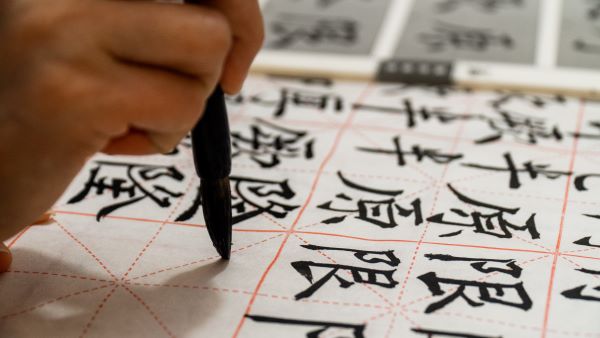
I remember it was sometime during my first week of class at LTL, I noticed that one of the other classes had been practicing calligraphy. I immediately told my teacher, and he set it up for me the next day!
It’s a great way to help you memorize characters and stroke order, and it’s very relaxing.
The school has always supplied me with plenty of paper, ink, and brushes. (And trust me, I’ve gone through a lot of paper practicing my calligraphy!)
You might even get to hang your creation on the wall!
If you’re interested in learning more about Chinese calligraphy, check out these links!
- http://www.art-virtue.com/styles/
- https://asiasociety.org/education/chinese-calligraphy
- https://www.tutormandarin.net/en/a-guide-to-chinese-calligraphy-handwriting-tips-for-beginners/
- http://afe.easia.columbia.edu/special/china_1000bce_calligraphy.htm
- http://www.art-virtue.com/principles/p3-posture.htm
Have you ever written Chinese calligraphy? What did you think? Let us know in the comments!
Chinese Calligraphy – FAQ’s
How do you say Chinese Calligraphy in Chinese?
Chinese Calligraphy is… 书法 (shūfǎ)
How many styles of Chinese Calligraphy are there?
In total there are five. Each style is very distinct and has developed over the years.
Seal Script
Clerical Script
Running Script
Walking Script
Standard Script
What do I need to start writing Chinese calligraphy?
Four things:
A brush
Ink
Inkstone (this can be omitted if you use liquid ink)
Paper
When did Chinese Calligraphy first come about?
Chinese Calligraphy has a rich history, dating back as early as around 200 BCE.
Can I learn Calligraphy?
Absolutely, we teach Calligraphy at LTL.
Want more from LTL?
If you wish to hear more from LTL Mandarin School why not join our mailing list.
We give plenty of handy information on learning Chinese, useful apps to learn the language and everything going on at our LTL schools!
Sign up below and become part of our ever growing community!

 Hi, my name is Mojca. I am from Slovenia in Europe and I work as a student advisor at our Beihai school.
Hi, my name is Mojca. I am from Slovenia in Europe and I work as a student advisor at our Beihai school.





6 comments
Calligraphy is a wonderful skill to have! I would love to learn how to do this!!
I need to make a template with standard script for the last name Yee. How canI do this?
[…] like with Chinese calligraphy, one needs to learn the basic strokes and the correct order in which they are put to paper in order […]
[…] igual que con la caligrafía china, es necesario aprender los trazos básicos y el orden correcto en el que se escriben en el papel […]
[…] igual que con la caligrafía china, es necesario aprender los trazos básicos y el orden correcto en el que se escriben en el papel […]
[…] Chinese word for calligraphy is 书法 (shūfǎ). This term combines two […]